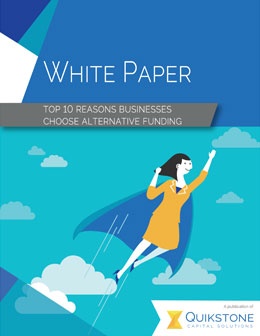 Fast casual dining is no longer just a buzzword; it's a powerful force shaping the restaurant industry. From customizable menus to quick service and a focus on high-quality ingredients, this segment has carved out a unique space between fast food and casual dining. If you're a restaurant owner, you're likely wondering—what's behind this surge in popularity, and how can you adapt to capitalize on it?
Fast casual dining is no longer just a buzzword; it's a powerful force shaping the restaurant industry. From customizable menus to quick service and a focus on high-quality ingredients, this segment has carved out a unique space between fast food and casual dining. If you're a restaurant owner, you're likely wondering—what's behind this surge in popularity, and how can you adapt to capitalize on it?
1. Millennials And Gen Z Are Redefining Dining Norms
Younger demographics dominate spending at fast casual restaurants, motivated by a mix of convenience, quality, and eco-conscious dining. Unlike older generations, Millennials and Gen Z prioritize the brands that align with their values, including sustainability, transparency, and ethical sourcing. A study by Technomic found that fast casual chains better meet these expectations compared to traditional fast-food players.
2. The Rise Of Health-Conscious Consumerism
An increasing number of consumers now expect transparency in what they eat. Buzzwords like “organic,” “non-GMO,” and “free-range” feature heavily on their shopping lists. Fast casual restaurants are prioritizing those keywords in their offerings, with menu boards highlighting nutrition and sourcing clarity. Sweetgreen, for example, focuses on fresh, local produce served in customizable salads and bowls—reinforcing the connection between healthy eating and fast casual success.
3. Time Is A Precious Commodity
Today's diner doesn't just want good food—they want it fast. But quick service alone isn’t enough anymore; they also want a meal that feels like it was made with care. Fast casual restaurants strike a balance by using efficient assembly-line layouts (think Subway or Chipotle) while ensuring a focus on freshly prepared meals.
4. The Instagram Effect
Let's face it—today's food isn't just for eating; it's for photographing too. Fast casual spots have capitalized on the social media boom by curating visually appealing meals and well-designed spaces that draw customers in. Eye-catching avocado toast or vibrant poke bowls aren’t just a meal—they’re content.
5. The Pandemic Accelerated Demand
The COVID-19 pandemic fundamentally changed how we dine, bolstering curbside pickup, delivery apps, and contactless service—all of which align seamlessly with the fast casual model. Restaurants that could quickly adapt to these trends, like Shake Shack with its user-friendly app and designated pickup areas, thrived where others struggled to adapt.
What This Means For Your Restaurant
Fast casual dining may be trending, but its longevity comes from how well it matches evolving consumer preferences. If you're running a restaurant, here are some ways to compete in this space—or even adopt elements of the fast casual model:
1. Focus On Ingredient Quality
Diners are increasingly willing to pay premium prices for meals made with higher-quality ingredients. If you currently rely on conventional supplies, consider transitioning to options like locally sourced produce or grass-fed meats. Highlighting these changes in your marketing or menus isn’t just trendy—it’s good for business.
2. Offer Customization
Customizable menus aren't just a perk anymore; they're an expectation. Whether it's DIY pizzas, build-your-own burritos, or salad bars, allowing guests to personalize their dining experience helps them feel more connected to your offerings.
3. Optimize Your Space
Fast casual establishments thrive on spaces that encourage both quick dining and lingering. Ensuring a comfortable yet efficient seating layout is key. Invest in durable yet modern furnishings, and consider offering free Wi-Fi to appeal to remote workers and casual diners alike.
4. Upgrade Your Online Presence
To stay competitive, you must cater to customers who order through apps or prefer contactless options. If you don’t already partner with food delivery platforms, it's worth exploring the most popular apps in your area. Also, prioritize your website's user experience—an easy-to-navigate interface with menus and mobile compatibility can make a huge difference.
5. Focus On Sustainability
Today's diners place real value on environmental responsibility. Whether it’s using compostable packaging or reducing food waste, leaning into sustainability efforts can create goodwill with customers while saving your business money in the long run.
6. Experiment With Pricing
While fast casual prices tend to fall between fast food and traditional dining, you should experiment to find the sweet spot for your audience. Competitive pricing shouldn’t come at the cost of profitability, but offering periodic discounts or loyalty programs could entice repeat customers.
Since 2005, Quikstone Capital Solutions has been a trusted advisor to thousands of merchants. Quikstone provides these merchants with easy, fast, and flexible working capital for all their business needs. If you need cash for your business, contact us today. We have only one goal: to help your business succeed.





